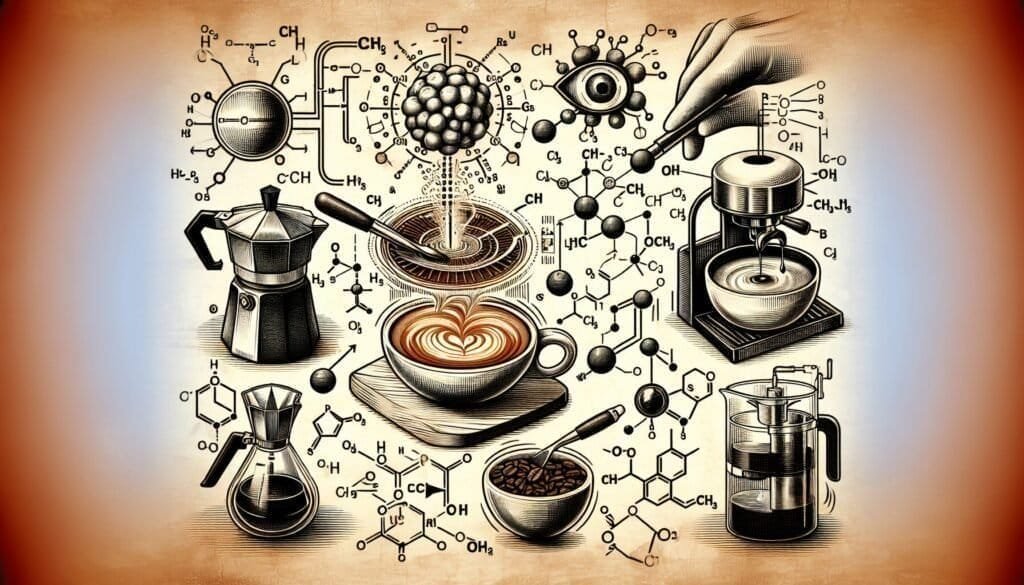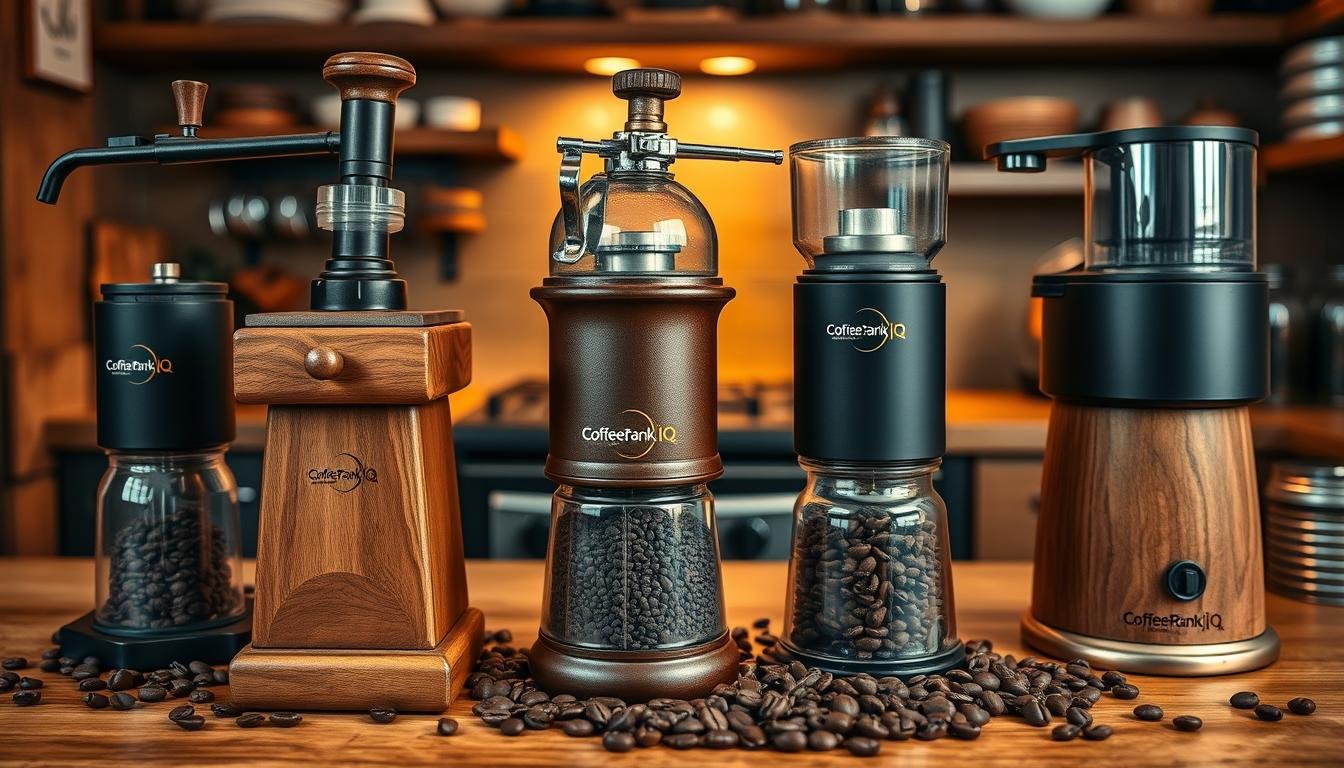Immerse yourself in the captivating realm of advanced espresso as we explore the intricate science behind achieving the perfect extraction. In this article, you will uncover the secrets of extracting exquisite flavors and aromas under the guidance of esteemed experts. Prepare to unlock a multitude of mesmerizing techniques and delve into the realm where art and science intertwine, revolutionizing your espresso brewing experience.

Fundamentals of Espresso Making
Understanding espresso preparation
espresso preparation is a delicate craft that requires precision, skill, and an understanding of the science behind the perfect extraction. It involves the process of forcing hot water through tightly packed coffee grounds, resulting in a concentrated and flavorful cup of coffee. Understanding the key elements of espresso preparation is essential for achieving consistent and high-quality results.
Primary ingredients for a quality espresso
The primary ingredients for a quality espresso are freshly roasted coffee beans and filtered water. Coffee beans should be of high quality, carefully selected for their flavor profile and roasted to perfection. The water used should be filtered to remove impurities that can affect the taste of the espresso. The combination of these two ingredients creates the foundation for a great espresso.
The importance of espresso machine
An espresso machine plays a crucial role in the process of making espresso. It is responsible for heating the water to the right temperature, exerting the correct amount of pressure, and providing the necessary control for extraction. Investing in a good espresso machine is essential for achieving consistent and excellent results, as it ensures that the brewing process is precisely controlled and optimized.
Choosing the Right Coffee Bean
Identifying high-quality coffee beans
high-quality coffee beans are the key to a delicious and well-balanced espresso. When selecting coffee beans for espresso, look for beans that are freshly roasted and sourced from reputable growers. Ideally, the beans should have a smooth and shiny appearance, indicating they have been roasted to perfection. Additionally, consider the aroma of the beans and look for a rich and enticing fragrance.
Ideal roast level for espresso
The ideal roast level for espresso is generally medium to medium-dark. This roast level allows for proper extraction of the flavors and oils within the coffee beans, resulting in a balanced and flavorful espresso. However, personal preference can also play a role in determining the ideal roast level, so it is essential to experiment with different options to find the perfect balance of flavors that suits your taste.
Impact of bean origin on the flavor profile
The origin of the coffee beans has a significant impact on the flavor profile of the espresso. Different coffee-growing regions around the world produce beans with distinct characteristics and flavor notes. For example, beans from South America are known for their smooth and well-rounded flavors, while beans from Africa often exhibit fruity and floral undertones. Understanding the impact of bean origin can help you choose the beans that align with your desired flavor profile.
The Grind Size and Its Impact
Understanding grind size and texture
The grind size refers to the coarseness or fineness of the coffee grounds. In espresso making, achieving the correct grind size is crucial as it directly affects the rate of water flow and the extraction process. A finer grind size increases the surface area of the coffee grounds, allowing for a more rapid extraction. On the other hand, a coarser grind size slows down the extraction process, resulting in a weaker and under-extracted espresso.
How grind size affects extraction
The grind size plays a significant role in determining the extraction time and the flavors extracted from the coffee grounds. If the grind size is too coarse, the water will flow too quickly through the coffee, resulting in a weak and sour-tasting espresso. Conversely, if the grind size is too fine, the water will struggle to flow through the grounds, leading to over-extraction and a bitter taste. Achieving the optimal grind size is crucial for a balanced and delicious espresso.
Optimal grind size for espresso
The optimal grind size for espresso falls somewhere between medium and fine. It should have a texture similar to table salt. This grind size allows for a controlled extraction, ensuring that the water flows evenly through the coffee grounds, extracting the desired flavors and oils without over-extraction. Experimenting with different grind sizes can help you find the sweet spot that produces a smooth and well-balanced espresso.
The Importance of Correct Dosing
What does coffee dosing mean
Coffee dosing refers to the amount of coffee grounds used for a single shot of espresso. It is crucial to measure and dose the coffee accurately to achieve consistency in the extraction process. Dosing too much or too little coffee can result in an imbalanced and inconsistent espresso.
How to correctly dose coffee for espresso
To correctly dose coffee for espresso, it is essential to use a scale to measure the appropriate amount of coffee grounds. A standard dose for a single shot of espresso is usually around 18-20 grams. However, individual taste preferences and the specific espresso machine may require slight adjustments to achieve the desired strength and flavor.
The relationship between dose and yield
The dose of coffee used directly affects the yield, which refers to the volume of espresso produced. The relationship between dose and yield is fundamental in achieving consistency in espresso making. Increasing the dose will generally result in a higher yield, while decreasing the dose will produce a smaller volume of espresso. It is important to find the right balance between dose and yield to achieve the desired strength and flavor concentration.

Tamping Technique and its Effect
The purpose of tamping
Tamping is the process of evenly compacting the coffee grounds in the espresso machine’s portafilter. The purpose of tamping is to create a uniform and level surface for water to flow through the coffee grounds during extraction. proper tamping ensures that the water is evenly distributed, enhancing the extraction efficiency and resulting in a well-balanced espresso.
Best practices in espresso tamping
To achieve an effective tamp, start by distributing the coffee grounds evenly in the portafilter. Then, apply firm and even pressure while holding the tamper perpendicular to the surface of the coffee grounds. The goal is to create a compact and level coffee bed without creating uneven channels or gaps. Consistency in tamp pressure and technique is key to achieving consistent results.
How tamping pressure impacts extraction
The pressure applied during tamping plays a vital role in the extraction process. Tamping too lightly can result in under-extraction, as the water will flow through the grounds too quickly. Conversely, tamping too forcefully can lead to over-extraction, as the water will struggle to pass through the densely compacted grounds. It is important to find the right balance of pressure to optimize the extraction and produce a well-extracted espresso.
Understanding Water Quality
Why water quality matters in espresso making
Water quality is often overlooked but plays a critical role in the taste and quality of espresso. The water used should be free from impurities such as chlorine, minerals, and sediments that can alter the flavor of the coffee. Optimal water quality allows for a clean and pure extraction, ensuring that the true flavors of the coffee are showcased.
Characteristics of suitable water for espresso
suitable water for espresso should have a neutral pH level, low mineral content, and be free from any unpleasant odors or tastes. Using filtered or purified water can help achieve the desired water quality for espresso making. Additionally, it is recommended to avoid distilled or soft water, as they lack the necessary minerals for flavor extraction.
The impact of water temperature on extraction
water temperature plays a crucial role in the extraction process. The optimal temperature for espresso extraction is around 195 to 205 degrees Fahrenheit. Water that is too hot can lead to over-extraction and a bitter taste, while water that is too cold may result in under-extraction and a weak flavor profile. Maintaining the right water temperature throughout the brewing process is essential for achieving a perfectly extracted espresso.
Exploring the Extraction Process
What is espresso extraction
Espresso extraction is the process of dissolving and extracting the soluble compounds within the coffee grounds through the application of hot water under pressure. This process allows for the extraction of various flavors, acids, and oils from the coffee, resulting in a concentrated and aromatic beverage.
The stages of coffee extraction
Coffee extraction occurs in several stages, starting with the initial contact of water with the coffee grounds. In the first stage, the water dissolves the more soluble compounds, extracting the bright and acidic flavors. As the extraction continues, more complex flavors and oils are extracted, resulting in a fuller-bodied and balanced espresso. Understanding the stages of extraction can help guide the brewing process and achieve optimal results.
Identifying under-extraction and over-extraction
Under-extraction occurs when the water comes into contact with the coffee grounds for too short a time or when the grounds are not sufficiently extracted. This results in a sour and weak-tasting espresso. Over-extraction, on the other hand, happens when the water is in contact with the grounds for too long or the grounds are overly extracted. This leads to a bitter and unbalanced espresso. By evaluating the taste and adjusting the brewing parameters, such as grind size and extraction time, it is possible to correct under-extraction or over-extraction issues.
The Role of the Espresso Machine
Types of espresso machines
There are various types of espresso machines available, each with its own unique features and functionalities. The most common types include semi-automatic, automatic, and manual lever machines. Semi-automatic machines offer control over the brewing process, while automatic machines automate certain functions. Manual lever machines provide a hands-on and customizable experience. Understanding the different types can help you choose the espresso machine that best suits your needs and preferences.
Key features of a good espresso machine
A good espresso machine should possess several key features to ensure optimal brewing and extraction. These features include temperature stability, consistent pressure control, a quality brewing group, and the ability to regulate shot times. Additionally, ease of use, durability, and maintenance requirements are also important factors to consider when selecting an espresso machine.
Maintenance and calibration tips for machines
regular maintenance and calibration of espresso machines are essential to ensure consistent performance and longevity. This includes regular cleaning, descaling, and lubrication of moving parts. Additionally, it is important to regularly calibrate the machine to maintain the appropriate temperature and pressure settings. Following the manufacturer’s guidelines and seeking professional assistance when necessary can help prolong the lifespan and optimize the performance of your espresso machine.
Troubleshooting Espresso Extraction
Common problems in espresso extraction
There are several common problems that can arise during espresso extraction, resulting in undesirable flavors or inconsistent results. These problems include channeling, uneven extraction, and excessive bitterness or sourness. Identifying and understanding these issues is the first step in troubleshooting and improving the quality of your espresso.
Expert solutions for extraction problems
To address extraction problems, it is essential to evaluate and adjust various brewing parameters. This includes adjusting the grind size, distribution and tamping technique, doses, and extraction time. Additionally, experimenting with different coffee beans, water temperatures, and machine settings can also help solve extraction issues. Seeking advice from experienced baristas or espresso professionals can provide valuable insights and guidance in troubleshooting and improving your espresso extraction.
When to seek professional help with your espresso machine
While many espresso extraction issues can be resolved through adjustments and experimentation, there may be instances where professional help is necessary. If you encounter persistent problems or if your espresso machine requires repairs or calibration, it is advisable to seek assistance from qualified technicians or espresso machine specialists. They have the expertise and knowledge to diagnose and fix complex issues, ensuring that your espresso machine is in optimal working condition.
Exploring Advanced Espresso Techniques
Perfecting the timing and technique
Advanced espresso techniques involve perfecting the timing and technique of the brewing process to achieve exceptional results. This includes mastering the art of dosing, tamping, and extracting, as well as understanding the impact of variables such as temperature, pressure, and brewing ratios. By fine-tuning these elements and continually experimenting and refining your technique, you can elevate your espresso-making skills to new heights.
Digging into double shots, ristretto, and lungo
Double shots, ristretto, and lungo are variations of espresso that offer different flavor profiles and intensities. Double shots involve using a larger dose of coffee to create a more concentrated and robust espresso. Ristretto is a shorter extraction that emphasizes the sweeter and more intense flavors of the coffee. Lungo, on the other hand, involves a longer extraction for a milder and more diluted espresso. Exploring these variations allows you to tailor your espresso experience to your taste preferences.
Experimenting with specialty espressos
Specialty espressos encompass a wide range of flavors and brewing techniques that deviate from traditional espresso. This includes exploring single-origin espressos, flavored espressos, and unique brewing methods such as cold brew or espresso over ice. By experimenting with specialty espressos, you can expand your palate, discover new flavors, and unleash your creativity as a home barista. Don’t be afraid to explore and push the boundaries of what is possible with espresso.
In conclusion, understanding the fundamentals of espresso-making is essential for achieving the perfect extraction and creating a flavorful and well-balanced cup of espresso. By mastering the elements of espresso preparation, choosing the right coffee bean, understanding grind size and dosage, and employing proper tamping techniques, you can take your espresso-making skills to new heights. Furthermore, exploring water quality, extraction processes, and advanced techniques allows you to refine and elevate your espresso experience. With the right knowledge, tools, and experimentation, you can become a true espresso connoisseur and enjoy the art and science behind this beloved beverage.




